Are you or a loved one in need of wheelchair access at a healthcare facility? Navigating medical appointments can be challenging, especially when accessibility options are limited. In this article, we'll explore how to effectively request wheelchair access, ensuring that your experience is as smooth as possible. So, let's dive in and discover the steps you can take to make your next visit more accessible!
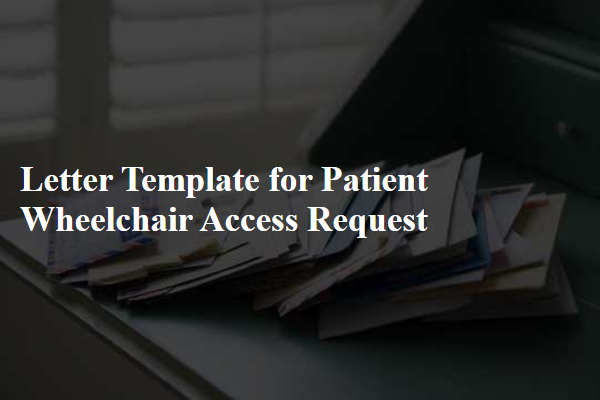
Patient's Personal Information
A patient requiring wheelchair access must provide personal information for appropriate accommodations. Essential details include full name, date of birth (format: MM/DD/YYYY), contact number (preferably a mobile number), mailing address (including city, state, and ZIP code), and insurance information. In cases related to specific medical conditions, inclusion of relevant health history such as mobility limitations, surgery dates, or chronic illnesses aids in tailoring services. Additionally, the patient should specify appointment dates and times for access need. This information ensures prompt and efficient arrangements at healthcare facilities.
Specific Accessibility Needs
A patient with specific accessibility needs may require a wheelchair to navigate healthcare facilities effectively. Ensuring seamless access involves evaluating entry points, such as ramps and automatic doors, specifically designed for mobility devices. Height-adjustable examination tables play a vital role in providing comfort during medical assessments. Accessible restrooms must be equipped with grab bars for stability and wider entryways for easy maneuverability. Additionally, designated parking spaces close to entrances (often marked with the International Symbol of Access) can significantly enhance convenience. Clear signage in Braille and large print indicates accessible routes, guiding patients effortlessly to services like physical therapy or diagnostic imaging. Prioritizing these elements ensures an inclusive environment for all individuals requiring assistance.
Medical Justification
A patient wheelchair access request often arises from medical conditions requiring mobility aids for daily activities. Conditions such as quadriplegia, multiple sclerosis, or severe arthritis can necessitate the use of a wheelchair to navigate spaces. Additionally, specific environments like hospitals, rehabilitation centers, or residential buildings may not adequately accommodate individuals with mobility impairments, leading to challenges in accessing essential services. Medical professionals often provide documentation justifying the need for wheelchair access, highlighting the importance of accessibility in enhancing patient dignity and promoting independence. Compliance with legal standards, such as the Americans with Disabilities Act (ADA), is crucial for ensuring adequate facilities for individuals requiring mobility assistance.
Desired Adaptations
To ensure patients with mobility challenges can navigate healthcare facilities comfortably, several adaptations are essential. Wheelchair ramps (at least 36 inches wide) should be installed at all entrances, complemented by handrails for stability. Doorways require an accessible width measurement of 32 inches to accommodate wheelchair users smoothly. Moreover, designated accessible parking spots (with a minimum of 8 feet width) must be allocated close to building entrances. Additionally, waiting areas should feature wheelchair-accessible seating arrangements to facilitate social interaction. Accessible restrooms should also be equipped with grab bars and adequate turning space, ensuring safety and convenience for all patients.
Contact Information for Follow-Up
Accessing patient wheelchair services in medical facilities ensures inclusivity and safety for individuals with mobility challenges. Hospitals or clinics, such as Mercy General Hospital located in Sacramento, California, typically provide designated wheelchair-friendly entrances, ramps, and elevators meeting ADA (Americans with Disabilities Act) standards. It is essential for patients to specify their needs prior to appointments, as many healthcare environments require advance notice for adequate preparation. Contact information such as a phone number or email for follow-up communication helps facilitate personalized assistance, coordination of resources, and confirmation of accessible transport arrangements, ensuring a seamless experience for patients requiring mobility support.
Letter Template For Patient Wheelchair Access Request Samples
Letter template of wheelchair accessibility request for medical facility
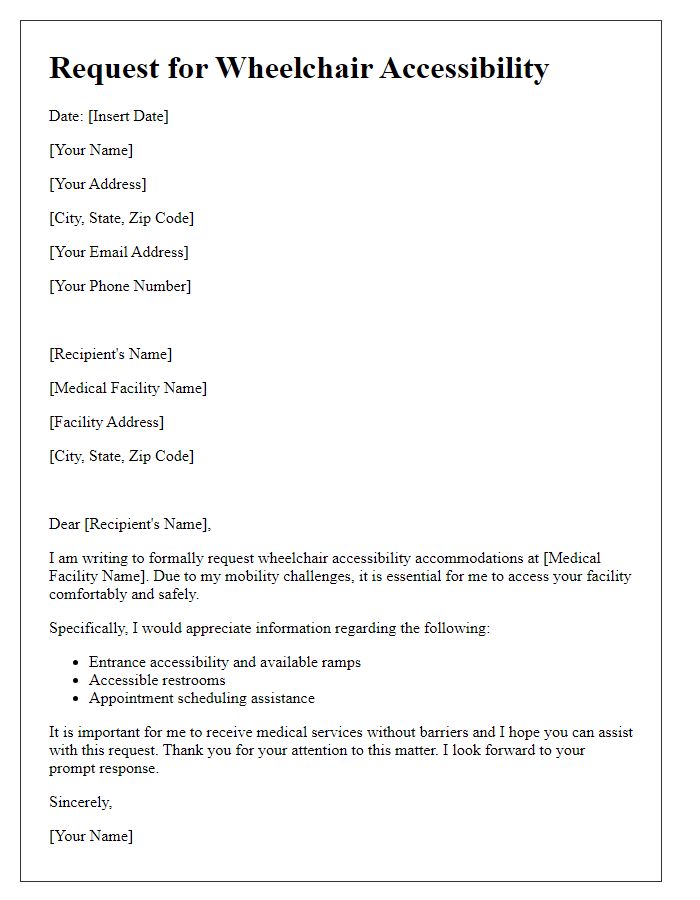
Letter template of wheelchair accommodation appeal for healthcare services
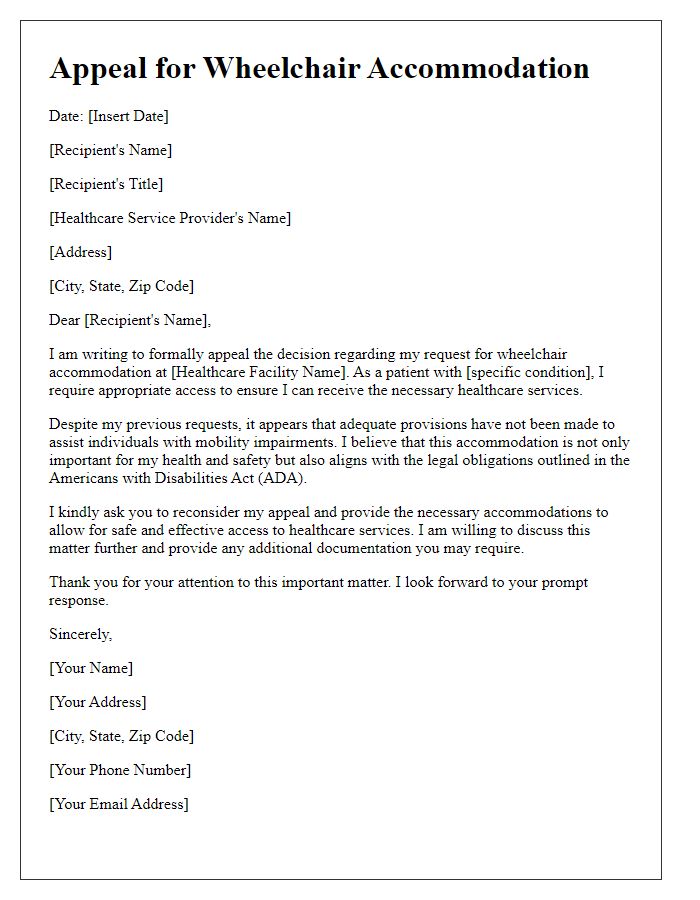
Letter template of petition for improved wheelchair access in treatment center
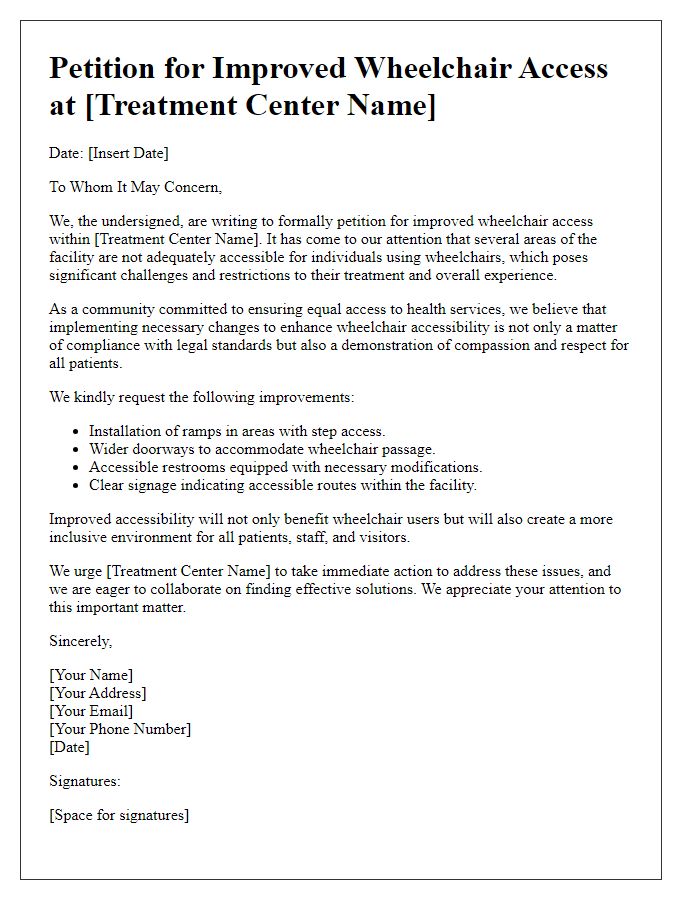
Letter template of appeal for wheelchair-friendly facilities in therapy center
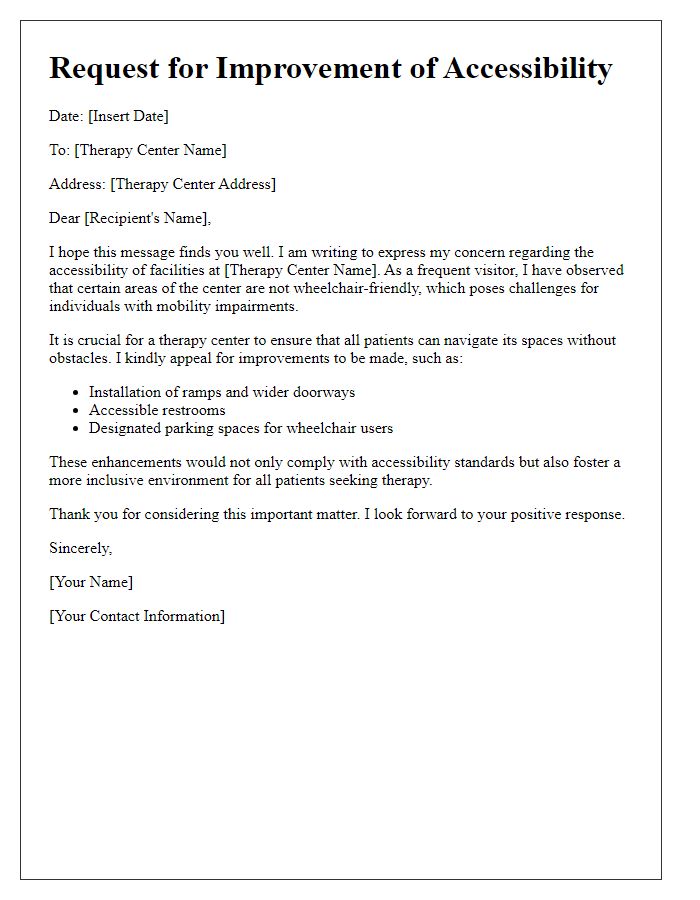

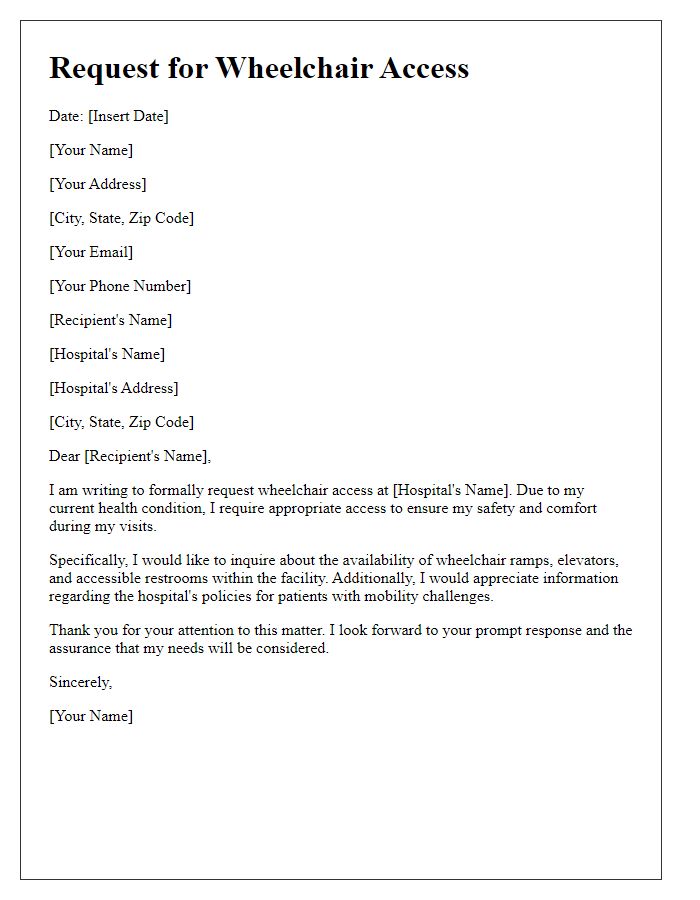
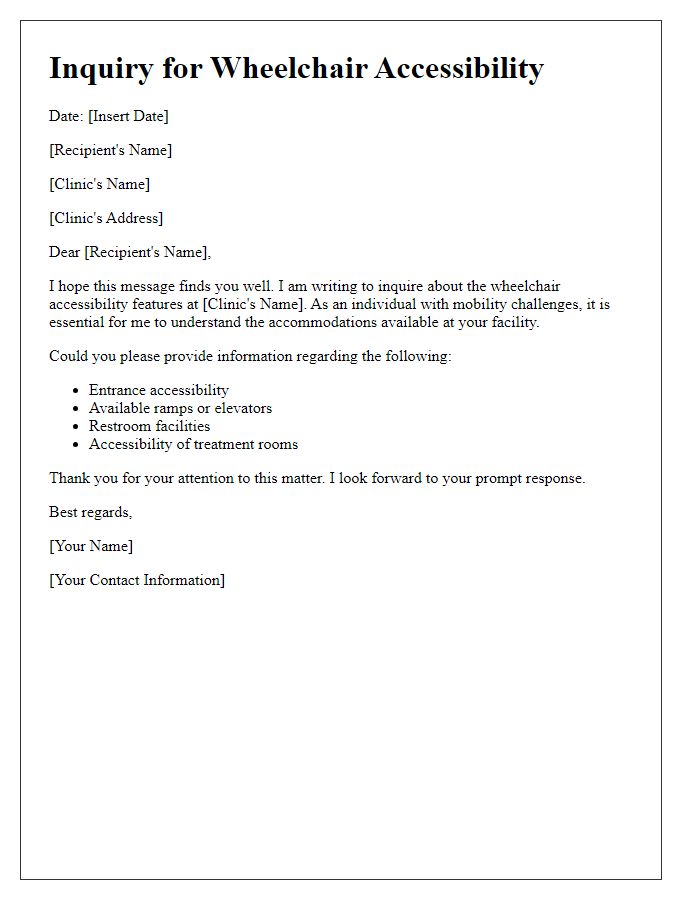
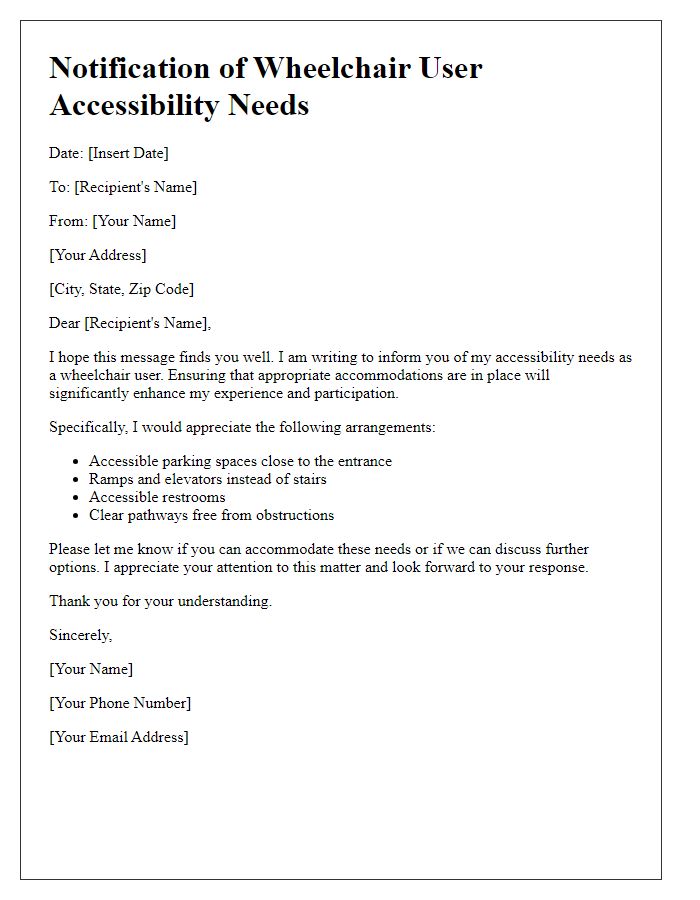
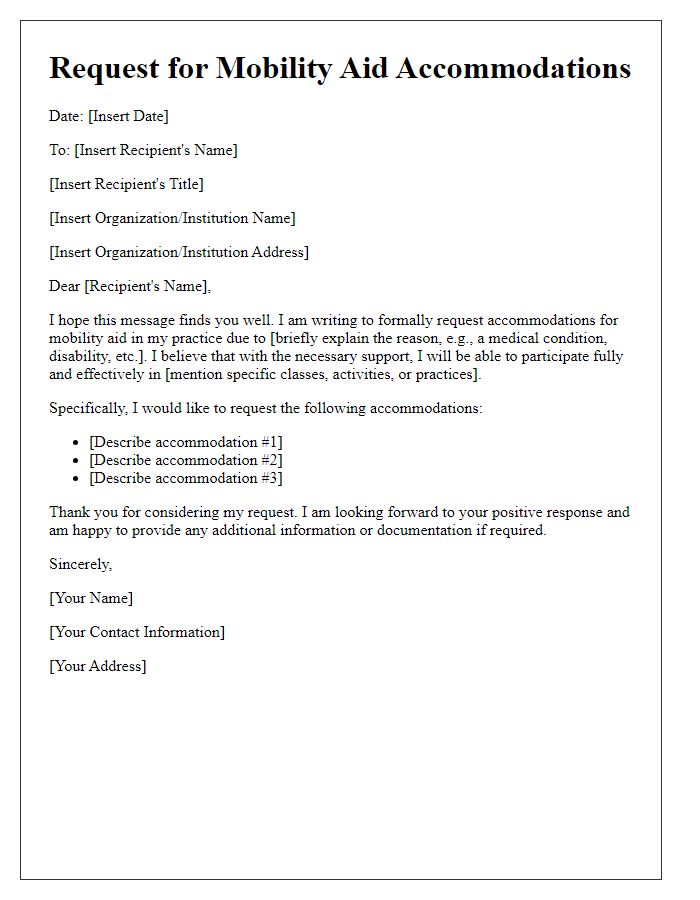
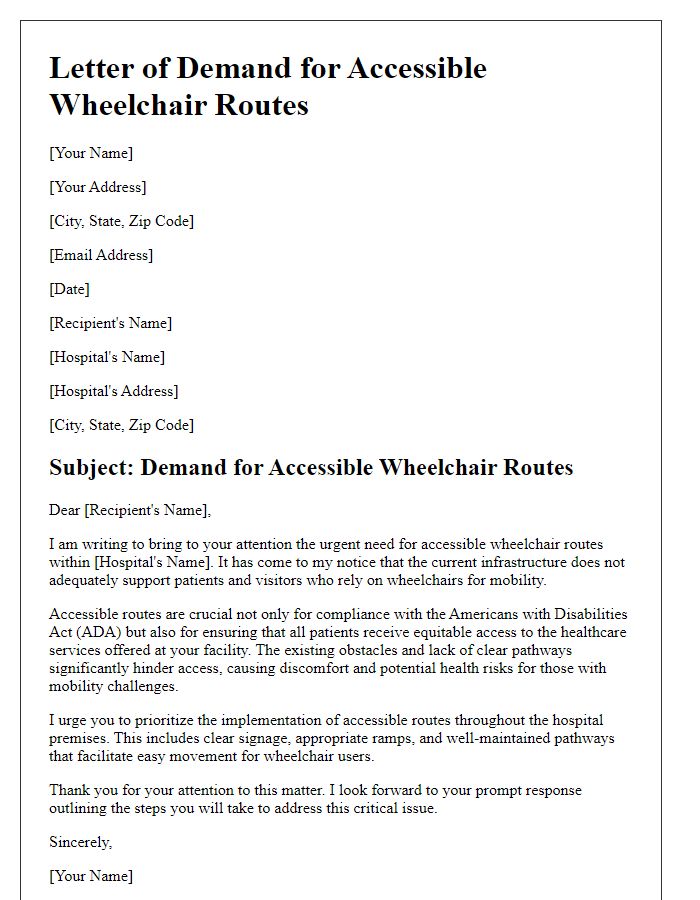
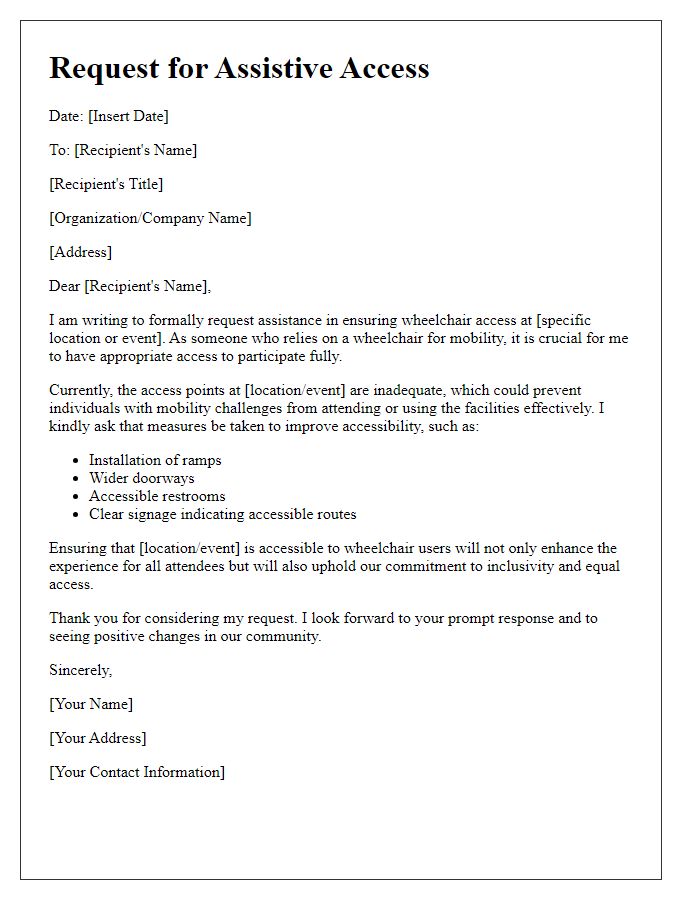


Comments